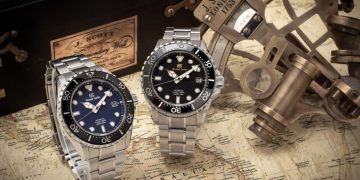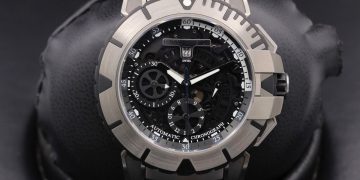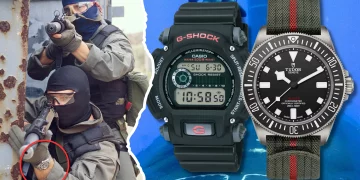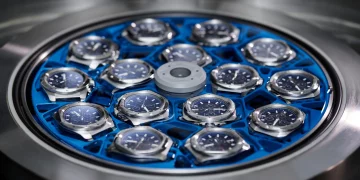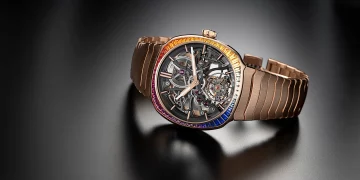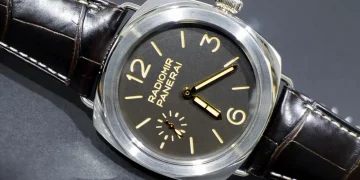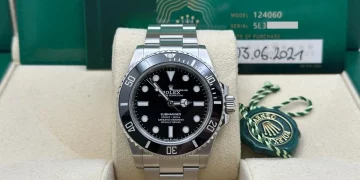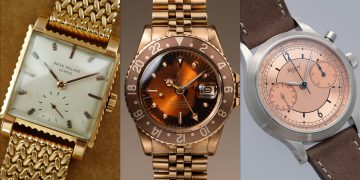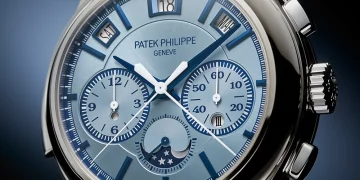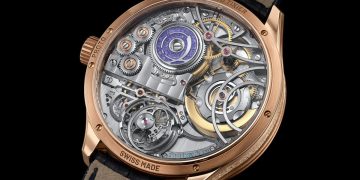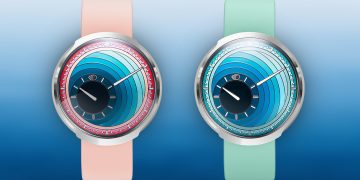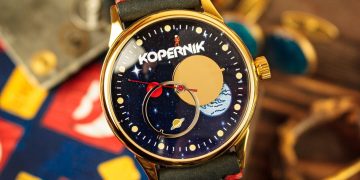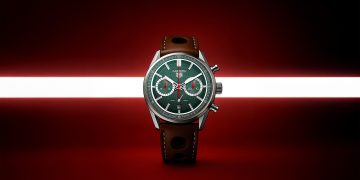When it comes to precision timepieces, Breitling and Seiko are two giants that stand apart in terms of craftsmanship, innovation, and purpose. Known for their heritage and technological prowess, these two brands specialize in watches designed for very specific, highly demanding environments. Breitling’s flying watches have become synonymous with aviation, and Seiko’s diving watches are revered by professionals and enthusiasts alike for their unmatched performance underwater.
The question arises: How do the technological advancements in Breitling’s flying watches compare to Seiko’s diving watches? What makes each brand’s timepieces stand out in their respective fields, and how do the technologies used to create these watches differ in terms of precision, durability, and functionality?
In this article, we will explore the technological innovations behind both Breitling’s flying watches and Seiko’s diving watches and provide an in-depth comparison. We will dive into the core aspects of watch technology, including movement types, materials used, design features, and specialized functionalities that make each brand’s timepiece unique and effective in its specific field. Through this comparison, we aim to offer a detailed understanding of what sets Breitling’s aviation watches apart from Seiko’s diving models and help you decide which is better suited for your needs.
1. The Technological Foundations: Flight and Dive Timepieces
Before examining the technological advancements specific to each brand, it’s essential to establish the distinct demands placed on flying watches and diving watches. The environments in which these timepieces are used require completely different sets of technology.
a. The Technological Demands of Flight Watches
Flight watches, such as those produced by Breitling, are created with aviation professionals in mind. Aviators face harsh conditions, with extreme altitudes, rapid time zone changes, and the need for precise navigation. The primary technological challenges of flight watches revolve around:
- Precision and Accuracy: Pilots rely on accurate timekeeping for flight plans, calculations, and navigation. Precision is vital for calculating fuel consumption, distance, and airspeed.
- Durability and Pressure Resistance: Flight watches need to withstand extreme altitudes, sudden changes in air pressure, and temperature fluctuations without losing accuracy.
- Ease of Use: A flight watch must be easily readable and user-friendly in the cockpit. The design must allow for intuitive timekeeping and on-the-fly calculations without distraction.
b. The Technological Demands of Diving Watches
Diving watches, like those made by Seiko, are engineered to withstand the unique demands of underwater exploration. Divers face high pressures, potential exposure to extreme temperatures, and the challenge of maintaining time visibility in low-light or dark conditions. The primary technological challenges for diving watches are:
- Water Resistance and Pressure Resistance: A diving watch must be able to withstand significant water pressure, particularly at deep depths. The case must be sealed tightly to prevent water infiltration.
- Legibility Underwater: Low light and murky water can make reading a watch difficult. The watch must be equipped with luminescent markers to ensure readability even in complete darkness.
- Functionality Underwater: Dive watches must feature specialized tools such as rotating bezels to track elapsed time, which is critical for ensuring diver safety and managing air supply.
With these distinct environmental demands in mind, it’s now time to explore how Breitling and Seiko have applied their respective technological innovations to meet these challenges.
2. Movement Technologies: The Heart of the Watch
Both Breitling and Seiko use distinct movement technologies that reflect the specific requirements of their target markets. Movement technology is one of the most important aspects of any timepiece, influencing the watch’s precision, functionality, and durability.
a. Breitling’s Movement Technology: Precision in the Sky
Breitling has long been at the forefront of chronograph movement technology, with its watches designed for aviation requiring precision, multi-functionality, and advanced timekeeping capabilities. Breitling offers several movement types, each tailored to specific needs.
- Mechanical Movements: Breitling’s mechanical chronograph movements, such as the Breitling 01, are designed for precision timekeeping with high accuracy. The Breitling 01 is a self-winding movement known for its highly accurate chronograph function, offering a 70-hour power reserve. It’s used in many of Breitling’s flagship models, including the Navitimer.
- SuperQuartz Movements: One of the key innovations in Breitling’s lineup is their SuperQuartz technology. This movement, used in models like the Breitling Aerospace, is ten times more accurate than traditional quartz movements. SuperQuartz is ideal for aviators who require ultra-precise timekeeping in high-stakes environments, where precision can make the difference between safety and disaster.
- Manual Wind and Automatic Movements: Many of Breitling’s aviation timepieces also feature manual-wind and automatic movements. These are classic mechanical systems that power the watch without the need for a battery, offering watch enthusiasts a traditional yet highly reliable solution for their timekeeping needs. Technological Evaluation: Breitling’s mechanical movements, such as the Caliber 01 and SuperQuartz, are crafted for high-precision applications. The advanced chronograph functions are designed with aviation professionals in mind, offering the ultimate in reliability and performance in the skies.
b. Seiko’s Movement Technology: Ruggedness and Reliability Underwater
Seiko, renowned for producing highly reliable automatic movements, has long been a pioneer in the field of diving watches. Seiko’s dive watches feature movements that are built to handle the extreme pressure, humidity, and temperature variations divers face.
- Automatic Movements: Seiko’s iconic Caliber 4R and Caliber 6R automatic movements are found in many of their dive watch models, including the Seiko Prospex collection. These movements are engineered to deliver outstanding accuracy while enduring the physical demands of the underwater environment. The Caliber 4R movement, for example, offers a 50-hour power reserve and is capable of handling the various stresses faced during long, deep dives.
- Spring Drive Movements: Seiko has also developed the innovative Spring Drive movement, found in high-end models like the Seiko Grand Seiko diver watches. The Spring Drive combines mechanical and quartz technologies to achieve a level of accuracy and smoothness not typically seen in traditional automatic movements. With the added benefit of constant power delivery, Spring Drive ensures that divers can rely on their watches for both precision and longevity, even at extreme depths.
- Kinetic Movements: Seiko’s Kinetic technology, which converts the movement of the wearer’s wrist into electrical energy to power the watch, can also be found in certain diving models. This feature eliminates the need for battery replacements and is ideal for divers who may not wear their watches regularly. Technological Evaluation: Seiko’s movements, especially the automatic Caliber 4R and Spring Drive, offer robust reliability and accuracy for divers. Seiko’s Kinetic technology also ensures that divers can maintain a powered timepiece without worrying about the need for manual winding or battery changes, making them ideal for extended underwater use.

3. Specialized Features: What Sets These Watches Apart?
The core features of both Breitling’s flight watches and Seiko’s diving watches are built to serve the specific needs of aviators and divers, respectively. However, the technological features that enable their specialized functionality differ significantly.
a. Breitling Flight Watches: Key Technological Features
- Slide Rule Bezel: One of the hallmark features of Breitling’s flight watches is the slide rule bezel, particularly evident on the Navitimer. This mechanical calculating device allows pilots to perform critical calculations such as fuel consumption, distance, speed, and altitude—all essential for navigating complex flight plans. The technology behind this bezel has remained largely unchanged for decades, standing as a testament to its effectiveness in aviation.
- Chronograph Functionality: Breitling’s flight watches are often equipped with a chronograph function, which allows pilots to measure time intervals during their flight. The ability to track elapsed time with precision is essential in aviation, where timing is a critical factor in navigation and flight operations.
- Digital and Analog Displays: In modern flight watches like the Breitling Aerospace, the use of analog and digital displays combined with SuperQuartz technology offers aviators an efficient way to track time with extreme precision. Technological Evaluation: The slide rule bezel and chronograph functions of Breitling flight watches are built with aviators in mind. These features are designed to handle complex tasks quickly and efficiently, making them indispensable tools for those in aviation.
b. Seiko Diving Watches: Key Technological Features
- Rotating Bezel: A critical feature of any diving watch, Seiko’s rotating bezel allows divers to track the amount of time spent underwater. This feature is crucial for managing air supply and ensuring that the diver does not exceed their safe time limits. Seiko’s rotating bezels are known for being easy to grip, even with gloves, and precisely marked for accurate time measurement.
- Helium Escape Valve: High-end Seiko dive models, like those from the Seiko Prospex LX Series, come equipped with a helium escape valve. This feature allows helium gas to escape during deep dives, preventing the watch crystal from popping off due to the build-up of gas in the case during long saturation dives.
- Luminescence: The luminescent markers and hands on Seiko dive watches are engineered to offer high visibility in low light or dark underwater conditions. The technology used in these watches, including Seiko’s Lumibrite paint, ensures that users can easily read their watch in complete darkness.
- Water Resistance: Seiko dive watches are known for their exceptional water resistance, with some models capable of handling depths of up to 1,000 meters. This capability ensures that divers can rely on their Seiko watches even under extreme underwater conditions. Technological Evaluation: The rotating bezel, helium escape valve, and luminescence of Seiko’s diving watches are designed to ensure that divers can safely and effectively monitor time during their dives. These features offer critical functionality that goes beyond aesthetics and ensures the diver’s safety.
4. Durability and Build Quality: Coping with Extreme Conditions
The durability of a watch is paramount when considering specialized timepieces designed for aviation or diving. Both Breitling and Seiko offer timepieces that are built to withstand harsh environmental conditions, but their approaches differ based on the unique requirements of flight and dive environments.
a. Breitling Flight Watches: Engineered for High-Altitude Conditions
Breitling’s flight watches are built to endure extreme altitudes and temperature fluctuations. These watches feature tough, rugged cases, typically made from stainless steel or titanium, materials chosen for their strength and lightweight nature. Some models also incorporate ceramic components to increase scratch resistance. The watches are also engineered to be shock-resistant, ensuring they can handle the bumps and vibrations common in aviation.
b. Seiko Diving Watches: Engineered for High-Pressure Conditions
Seiko’s diving watches, on the other hand, are built to withstand high-pressure underwater environments. The cases are made from hardened steel or titanium for both corrosion resistance and durability under immense pressure. Seiko’s water resistance technology and pressure testing ensure that these watches are capable of enduring depths of over 1,000 meters in some models, providing divers with the peace of mind that their watch will continue to function even at extreme depths.
5. Conclusion: Which Timepiece Technology Is Superior?
Both Breitling’s flying watches and Seiko’s diving watches showcase impressive technological advancements in their respective fields. Breitling excels in precision timekeeping, chronograph technology, and aviation-specific functions like the slide rule bezel. Seiko, meanwhile, has pioneered innovations in water resistance, luminescence, and pressure resistance that cater specifically to divers who require reliability in extreme underwater conditions.
In terms of technological advancements, it’s not about one being inherently superior to the other, but rather about which set of technologies best aligns with your needs. Breitling offers advanced chronograph features and precision mechanisms ideal for those in aviation, while Seiko provides rugged, highly reliable watches suited for deep-water environments.
Choosing between the two brands depends on your environment—whether you need a timepiece capable of withstanding the challenges of high altitudes and precision flight planning or one that can handle the extreme depths and pressures of underwater exploration. Both Breitling and Seiko continue to push the boundaries of horological technology, offering exceptional watches that excel in their own domains.


